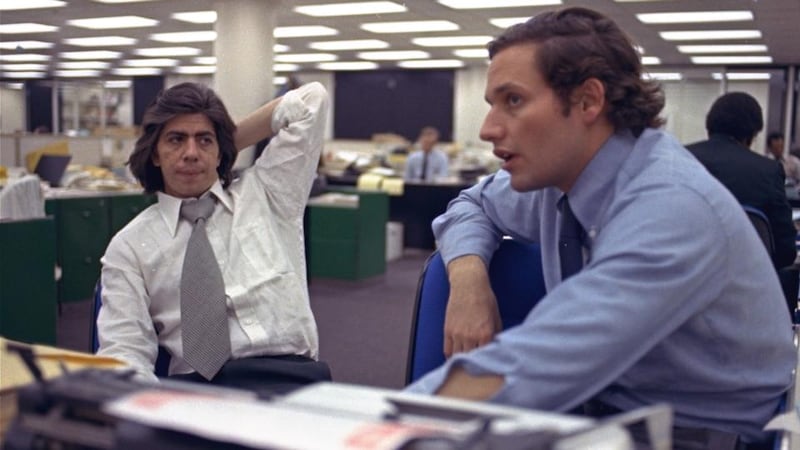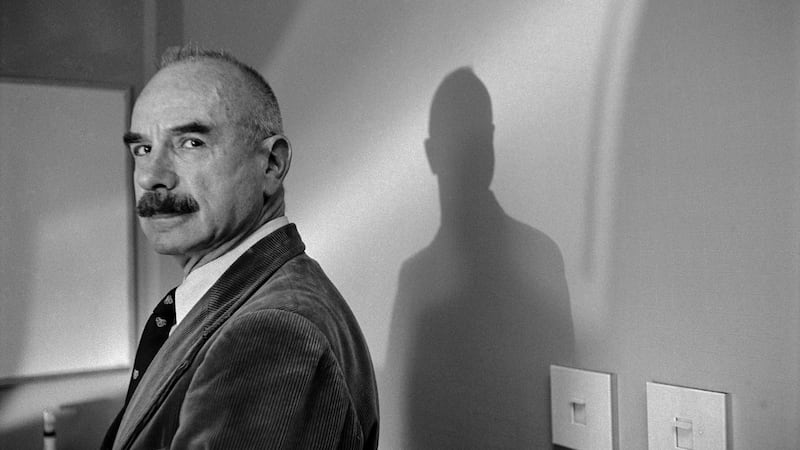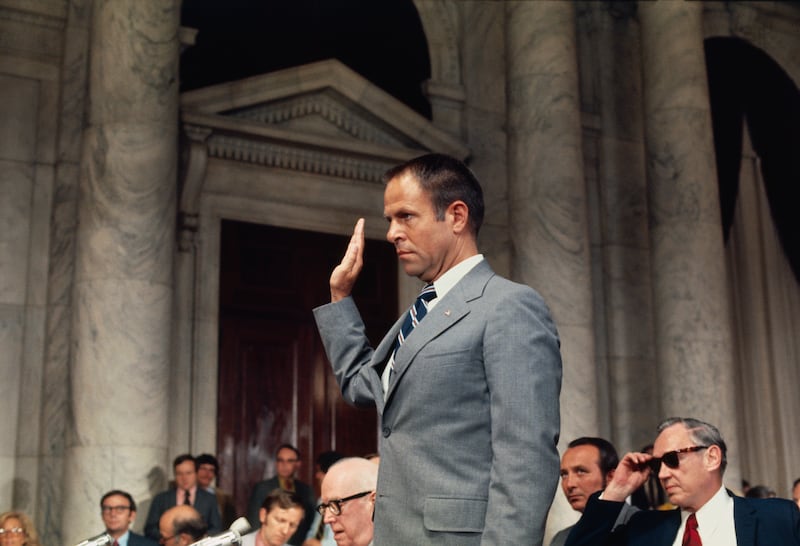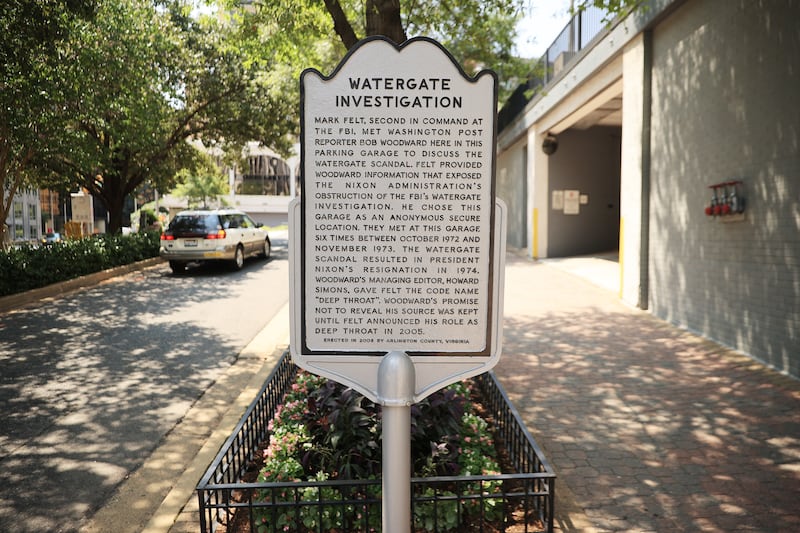Fifty years ago this Saturday news bulletins in Washington reported that a group of men had been arrested overnight while trying to carry out a burglary in an office/residential/hotel complex in the city.
At her home in the suburb of Bethesda in nearby Maryland, Judy Hoback immediately had “bad vibes”.
She called her boss in the organisation for which she worked. He told her when she returned to the office the following morning to immediately lock up the payroll information and not let anyone near it.
Judy Hoback was a bookkeeper working for the finance committee of the campaign to re-elect the Republican US president Richard Nixon. The target of the burglars was the office of the rival Democratic Party.
READ MORE
Set out in the payroll accounts – the information that her boss was anxious would remain confidential – were details that one of the burglars, Jim McCord, was employed as a security officer for the campaign to re-elect the president.
The office complex where the break-in took place was known as the Watergate building. The ensuing scandal over the burglary and the subsequent cover-up would eventually bring down the president and see several of his most senior aides go to jail.

Richard Nixon was way ahead in the polls when the burglars broke into the offices of the Democratic Party on the night of June 17th, 1972.
Why it was felt that such dirty tricks were necessary has been a topic of debate ever since.
The break-in itself, which was aimed at planting listening devices and accessing private documents, was an amateurish affair. Tape was left on a door, which alerted a security guard that something was amiss.
It subsequently emerged that June 17th was not the first occasion the burglars had entered the offices. There had been a break-in a month earlier, which had also gone awry. The listening devices that had been planted either had not worked properly or had been located in the wrong place – so a second visit was needed.
The arrest of the burglars and the discovery that some had had previous associations with the Central Intelligence Agency, particularly in relation to its activities against Fidel Castro in Cuba, alerted reporters, most notably Bob Woodward and Carl Bernstein in the Washington Post, that what became known as “Watergate” was not just about an ordinary break-in.

Eventually Judy Hoback and a colleague agreed to talk to the FBI about the links between the burglars and the campaign for the re-election of the president and how some of the funding it had raised had been spent.
Ultimately it emerged that more than $500,000 had been raised in cash and paid out for the equipment that was used in the burglary and for the salaries and expenses of those involved before and after the break-in. Some laundered money had been in the possession of the one of the burglars when he was arrested.
The FBI identified two co-conspirators in the burglary: E Howard Hunt, a former high-ranking CIA officer only recently appointed to the staff of the White House, and G Gordon Liddy, a former FBI officer who worked for the campaign to re-elect Nixon.

In the White House there were growing concerns about the trail leading back to the presidency.
Six days after the break-in and the arrest of the burglars, Nixon’s chief of staff Bob Haldeman told the president at a fateful meeting: “The FBI is not under control ... their investigation is now leading into some productive areas, because they’ve been able to trace the money.”
Haldeman said there was a plan that would see the CIA claim, falsely, that national security secrets would be jeopardised if the FBI did not halt its Watergate investigation.
Nixon approved the plan and ordered Haldeman to call in the CIA director and his deputy. “Play it tough,” the president directed. “That’s the way they play it, and that’s the way we are going to play it.”
This conversation was recorded as part of an internal taping system in the White House. It became known as the “smoking gun” tape. When Nixon was forced in 1974 to release these recordings detailing his knowledge of the Watergate cover-up, it marked the beginning of the end of his presidency.

The FBI investigation established that Watergate was not a standalone operation. Hundreds of thousands of dollars in contributions to Nixon’s re-election bid had been set aside to pay for an extensive undercover campaign of espionage and sabotage aimed at discrediting individual Democratic presidential candidates and disrupting their campaigns. Hunt and Liddy were key players in this dirty tricks initiative.
However, even before that there was a unit known as the “plumbers” which had an initial mission to stop leaks from the Nixon administration to the media.
One of these leaks was the famous “Pentagon Papers”, a highly classified report carried out by the US defence department on the war in Vietnam.
This papers were leaked by an analyst at the Rand Corporation, Daniel Ellsberg, and were published amid huge controversy by the New York Times and the Washington Post.
Nixon’s “plumbers” carried out a burglary of the office of Ellsberg’s psychiatrist, hoping to find incriminating material or evidence of communist sympathies.
In another incident Nixon wanted a safe at the Washington think tank, the Brookings Institution, “cleaned out” because he believed it contained information on the Vietnam war that could be damaging to him. Tapes later revealed him pounding on his desk demanding that this be carried out.
One idea floated by a Nixon aide was for the Brookings building to be firebombed. The plan called for the president’s operatives to rush in and steal the documents in the confusion while firefighters tackled the blaze.
As the 1972 election approached, “the plumbers” moved on to political sabotage and spying roles against the president’s Democrat opponents.
A Nixon operative was inserted into the campaign of Democrat senator Ed Muskie and ultimately became his driver. The chauffeur stopped off between Muskie’s Senate office and his campaign headquarters to a specially-rented apartment where a photocopying machine had been installed. Troves of documents on campaign strategy, draft speeches, position papers, finance details and fundraising plans all fell into the hands of Nixon’s team.
Muskie’s campaign was undermined by leaks and fabrications including a famous forged letter which purported to show he condoned the use of the word “Canuck”, a derogatory term for Canadians.
He withdrew from the election in April 1972 leaving Nixon facing George McGovern, who was considered to be a weaker candidate.
At a conference last week to mark the 50th anniversary of Watergate, co-organised by Irish filmmaker and author Shane O’Sullivan, Judy Hoback Miller, as she is now known, said as soon as she heard about the money found in the possession of the Watergate burglars, she knew there was a connection to the campaign to re-elect the president.
She said she had been involved in counting the large sums raised which had been given out to pay, in part, for the dirty tricks operation. “I knew the connection and it really scared me and wondered if it went as far the White House but I had no idea it went that far.”
One of the FBI agents who interviewed her, Paul Magallanes, told the conference that Hoback had provided the complete layout of the finances and where the money went and what it was used for. “It was a revelation and groundbreaking and gave us some direction in this case,” he said.
However, while the FBI agents were trying to investigate Watergate, Magallanes maintained they were also operating in an environment where they were uncertain about what their organisation actually wanted.
The FBI itself was in a state of turmoil. Its director J Edgar Hoover, who had been in charge for over 40 years, had died just a month before Watergate. An acting director was now in place. “We as agents were operating in a hostile and ill-defined internal environment. We did not know who was supporting us at headquarters.”
Hoback Miller told of agreeing to meet the FBI agents, but said she felt nervous and scared. She was prepared to discuss what she knew about the campaign to re-elect the president only if she believed she could trust them.
In an effort to find out if that was the case, she met two agents including Magallanes for dinner. She also was approached by Bernstein as he pursued the Watergate story.
After disclosing confidential details to the FBI agents, she was angered to find the material was leaked some weeks afterwards to the Washington Post. “I could feel myself flush and [go] red and become very nervous at the time as I knew that information had come from me. I was really concerned then,” she said.
Hoback Miller said one night she felt she was being followed home from work. “I was very, very scared.” She asked her babysitter if she could keep her daughter overnight. At that time she was a widow with a young child, her first husband having died of a heart attack in his early 30s. She suspected that people at the campaign were aware she was the source of the leak, and sent her daughter went to stay with family for a few months.
She suspected the information she had given to the FBI agents had leaked out through “higher ups”, and was later to learn that someone at a very high level in the bureau was talking to the press.
In 2005 it was confirmed that the second most senior person in the FBI – Mark Felt – was “deep throat”, Woodward’s and Bernstein’s anonymous source.

Magallanes, however, told last week’s conference he was not a fan of Felt’s, whom he said had been a “hatchet man” for Hoover in the FBI and had hurt a lot of field agents in disciplinary proceedings. He also believed that Felt had his own agenda and was bitter at not being appointed as FBI director after Hoover’s death.
Magallanes said that Felt, by leaking to the press, had put witnesses including Judy Hoback “in peril”. He said Felt had been lauded by the media as a whistleblower – incorrectly in his view. “Felt was not a hero, he was a bum.”
Shane O’Sullivan, who is from Dublin, is currently head of the department of film and photography at Kingston School of Art in London.
He is the author of a book called “the Watergate burglars” and was referred to in the New York Times recently for revealing details of the death of one of the burglars which was unknown generally.
He told The Irish Times the motivation behind the Watergate break-in stemmed from “a certain atmosphere of paranoia in the White House”.
“That is attributable to a couple of things; the anti-[Vietnam]war movement, the leaking of the Pentagon Papers the year before and Daniel Ellsberg’s part in that... Even though it served no political purpose they went after Ellsberg and shot themselves in the foot multiple times through a failed prosecution,” he said.
“There were times when the [radical left wing militant group ‘Weather Underground”' was gaining traction and there were bombings in various cities. At times it felt like a White House under siege.
“I think they also felt that Larry O’Brien, who was the chairman of the Democratic national committee, was the main danger to them politically. I think they feared that he had some information on a scandal involving a telecommunication company in 1972 which had secretly financed the Republican Party ands also had ties to various goings on in Chile at the time. These were secrets the Republicans were trying to bury and they thought Larry O’Brien may have information about that. He was the prime target; they wanted to break into his office and to bug his phone to get the classic opposition research on anything that might compromise him or compromise the [Democratic] party that they could use against them politically.”
O’Sullivan said the Miami Cubans who took part in the break in had been told by Howard Hunt, one of the masterminds of the burglary, that Fidel Castro was secretly financing George McGovern, who was the likely Democratic Party candidate in the presidential election in 1974.
He said the legacy of Watergate was that it added to the disillusionment with politics some experienced following the assassinations of Martin Luther King and Robert Kennedy in 1968.
“Watergate took that on a further level. Here you have tapes of the president in the White House, speaking the way he did on those tapes, and tearing the veil away from the way most Americans thought a president acted when in office.
“To have the naked raw language of Nixon on those tapes, which were needed [to provide] the evidence to remove him from office. I think that was a further step in the alienation from the political process.”
Speaking at the conference Timothy Naftali, clinical associate professor of public service and history at New York University and founding director of the Nixon presidential library, argued that the former president had “tightened the noose” around his presidency by a series of unforced errors. He said it was Nixon who installed the taping system and who waived executive privilege to allow his associates give evidence to Congress and who ultimately handed over the tapes. His associates had hired Liddy for the spying and sabotage programme when he had already bungled the “plumbers” operation – linking two separate “potential presidency-ending” issues.
He said Nixon was guilty. However, he suggested, one of the lessons of Watergate was that a criminal president “is not necessarily going to get caught”.
















